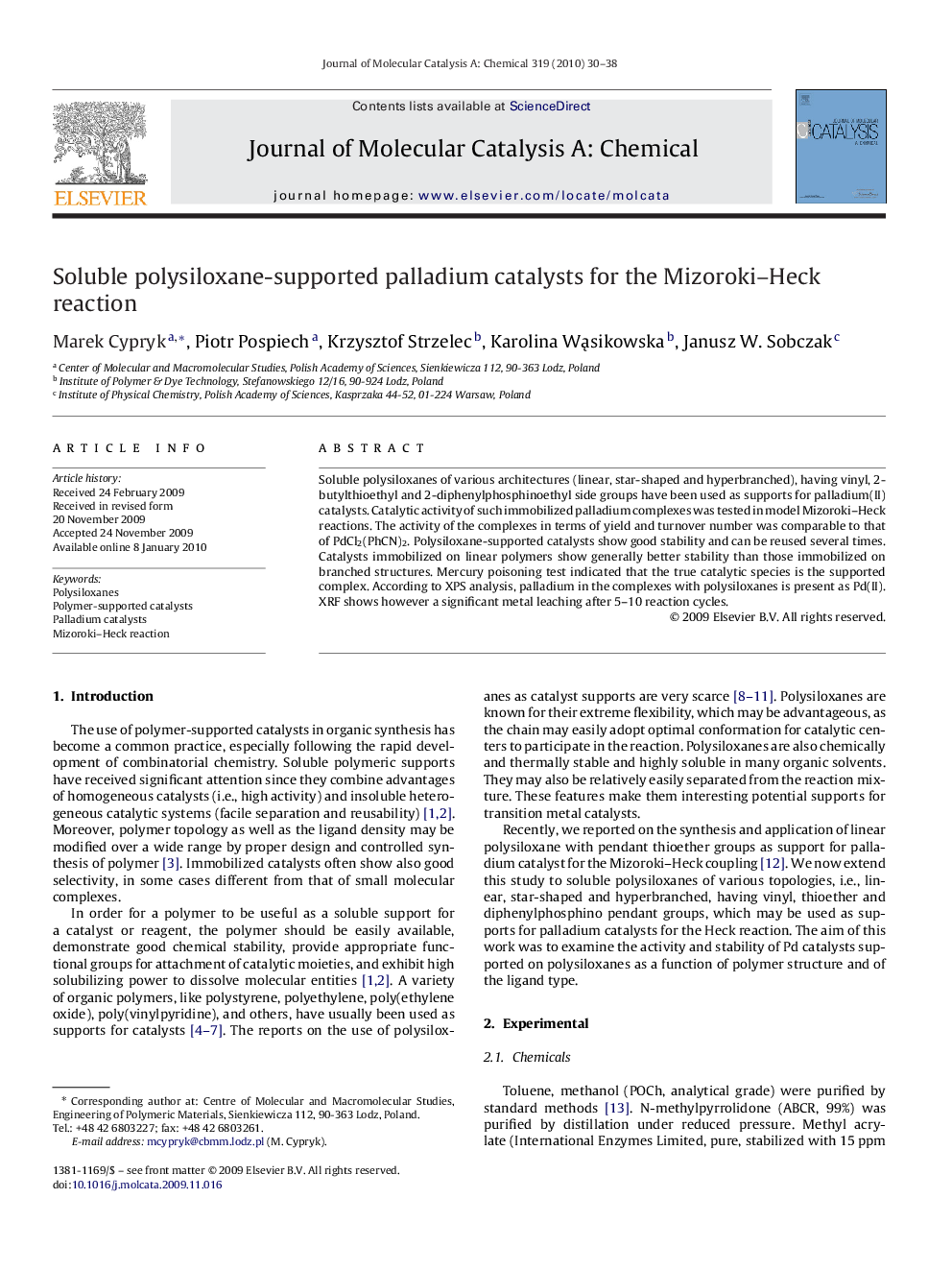| Article ID | Journal | Published Year | Pages | File Type |
|---|---|---|---|---|
| 66866 | Journal of Molecular Catalysis A: Chemical | 2010 | 9 Pages |
Soluble polysiloxanes of various architectures (linear, star-shaped and hyperbranched), having vinyl, 2-butylthioethyl and 2-diphenylphosphinoethyl side groups have been used as supports for palladium(II) catalysts. Catalytic activity of such immobilized palladium complexes was tested in model Mizoroki–Heck reactions. The activity of the complexes in terms of yield and turnover number was comparable to that of PdCl2(PhCN)2. Polysiloxane-supported catalysts show good stability and can be reused several times. Catalysts immobilized on linear polymers show generally better stability than those immobilized on branched structures. Mercury poisoning test indicated that the true catalytic species is the supported complex. According to XPS analysis, palladium in the complexes with polysiloxanes is present as Pd(II). XRF shows however a significant metal leaching after 5–10 reaction cycles.
Graphical abstractSoluble polysiloxanes of various architectures having various ligands have been used as supports for palladium catalysts. Their catalytic activity was tested in model Heck reactions.Figure optionsDownload full-size imageDownload high-quality image (44 K)Download as PowerPoint slide
